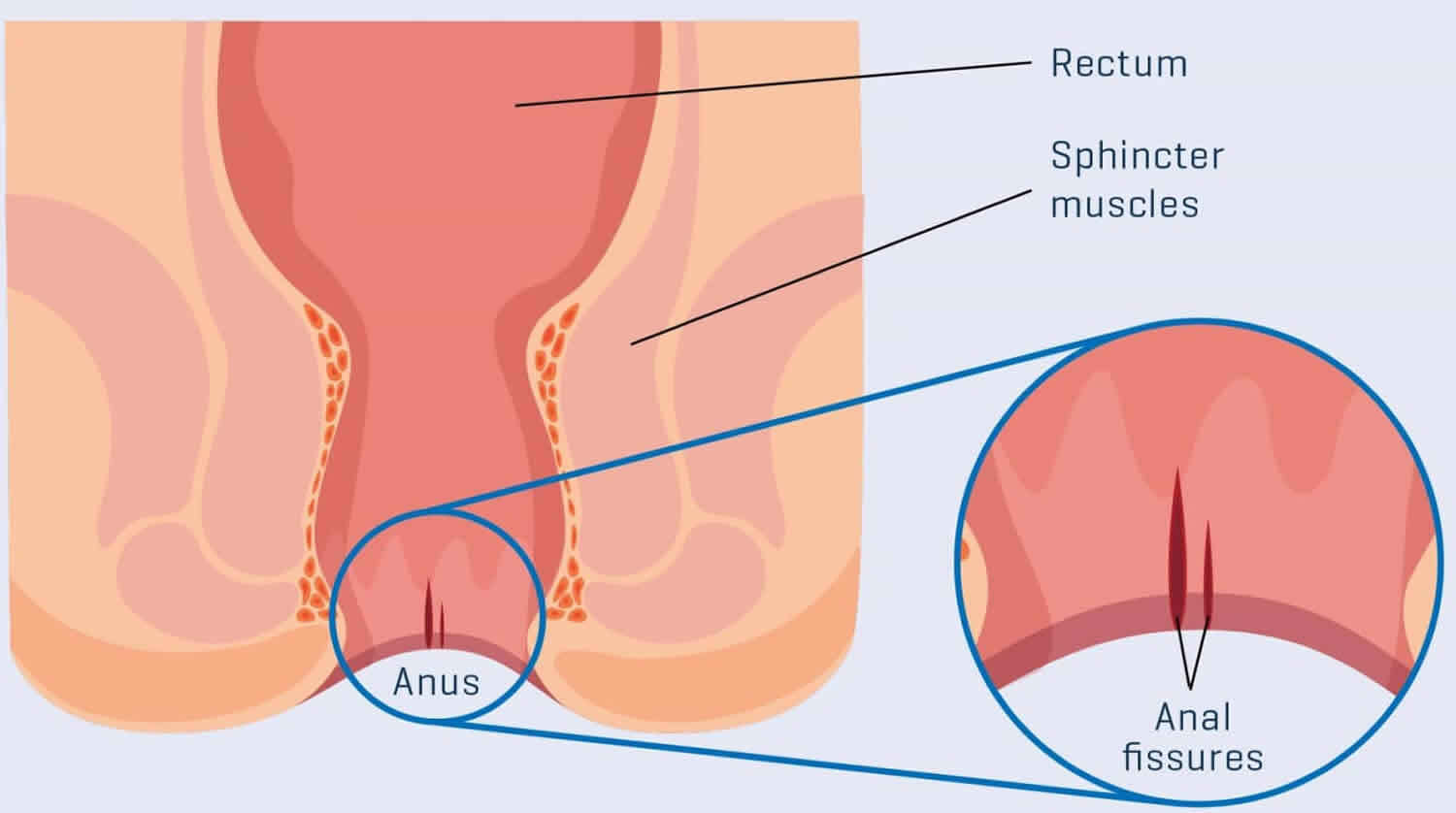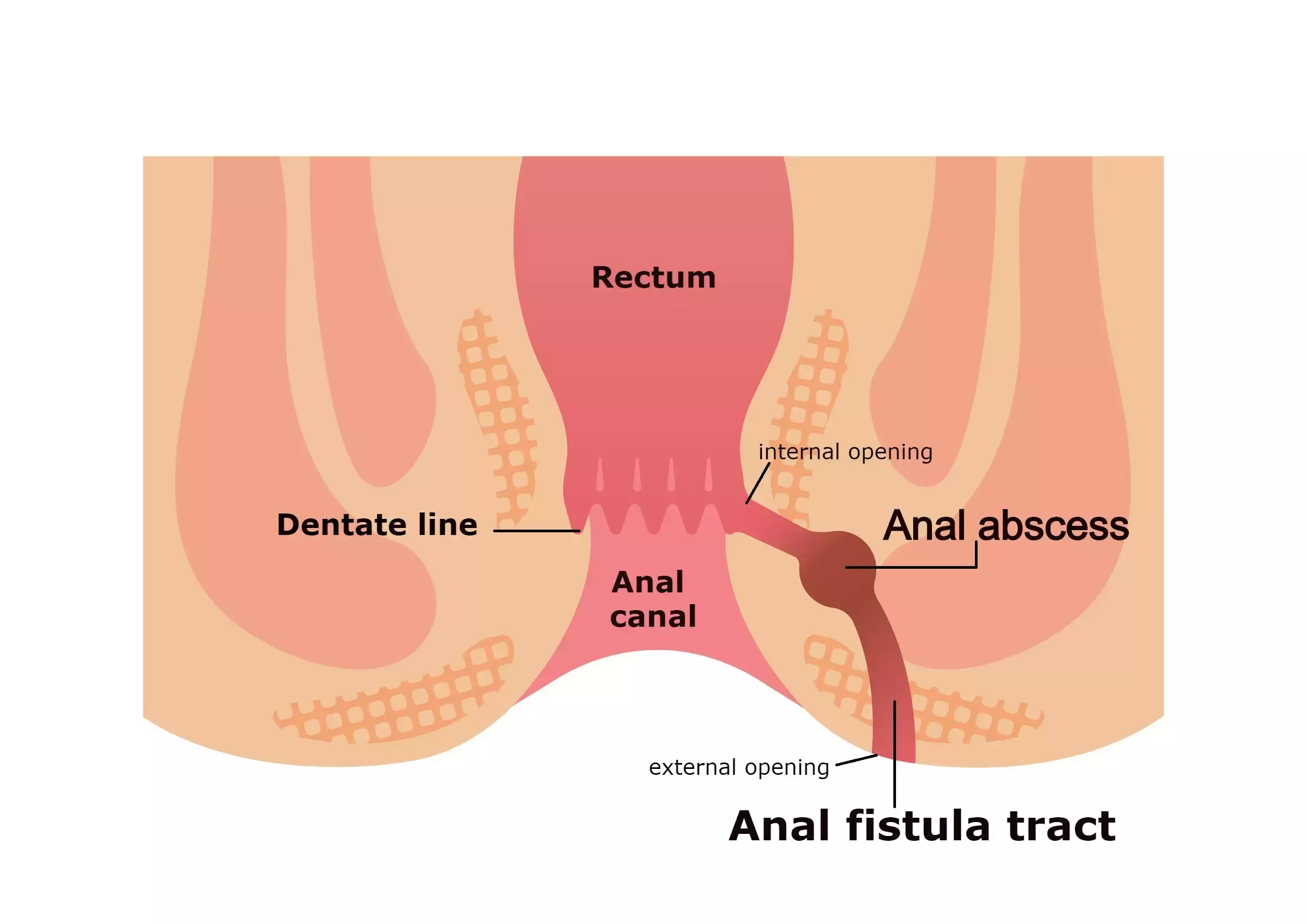Laser procedures
What is fissures
An anal fissure is a cut or a tear in the thin, delicate lining of your anus. The tear often exposes the muscle around the anus, called the anal sphincter. The damage can cause that muscle to spasm, which can pull apart the edges of the fissure even more. The spasms can cause pain and slow down the healing. Bowel movements can also keep the fissures from getting better.

How is the laser procedure done
Laser treatment is one of the most safest procedures to treat fissures. A laser is used to create a hole which helps relax the anal sphincer muscles. Once the laser is inserted in the anus, it makes way to the fissure to create an incision. The looseing of the anal muscle heals the fissures and also the scars.
What to expect from procedure
Post the procedure, you need to do the following for a faster recovery
- Use stool softeners as prescribed
- Maintain hygiene near the anal area
- Make diet changes to include high fiber foods
- Lifestyle changes to be active and healthy. Laser treatment has quick recovery and there is no need of hospitalization
What is Piles/Hemorrhoids
Hemorrhoids (HEM-uh-roids), also called piles, are swollen veins in your anus and lower rectum, similar to varicose veins. Hemorrhoids can develop inside the rectum (internal hemorrhoids) or under the skin around the anus (external hemorrhoids).
How is the laser treatment done
In laser surgery for piles or hemorrhoids, a laser beam is used to burn and shrink the hemorrhoids, which are swollen and inflamed anal tissues. We focus a narrow beam of light on the tissues to disrupt the blood flow & allow it to fall off. The procedure is not invasive in nature and causes no bleeding or pain. Laser surgery for piles is usually performed as a daycare procedure where the patient can be discharged within 24 hours. The recovery after the surgery is generally short and effortless.
What to expect from procedure
Once the effects of the anesthesia wear off, the patient may experience slight discomfort and pain sensation that is likely to be very, very minimal. The site will be tender and medications will be provided to ease any pain. Your bowel movements will take some time to get back to normal.
you need to do the following for a faster recovery
- Use stool softeners as prescribed
- Maintain hygiene near the anal area
- Make diet changes to include high fiber foods
- Lifestyle changes to be active and healthy. Laser treatment has quick recovery and there is no need of hospitalization
What is anal fistula
An anal fistula is a tunnel that runs from inside the anus -- the hole your body uses to get rid of solid waste -- to somewhere in the skin around it. It usually follows an infection that didn’t heal the right way. Surgery is usually needed to treat anal fistula.

How it is it done
Fistula laser closure involves introducing the laser fibre into the fistula from the outside and passing it through to the opening inside the rectum. Then, the laser is activated, causing the tissue around it to shrink as the proteins denature. The laser is slowly drawn back through the fistula at an approximate rate of 1 cm every three seconds, sealing the channel behind it. The internal opening is then closed with a suture and in some cases a skin flapThe advantage of using a laser is that it is less invasive and causes minimal damage to the sphincter muscle, reducing the risk of incontinence after the procedure.
What to expect from procedure
A minimally invasive procedure, the surgery is quick and you can be discharged the same day. You can resume daily activities after 2-3 days of the surgery. There will be diet chart given to you for a smoother bowel movement. Limited physical activity is suggested for a few days post the surgery for appropriate recovery
What is pilonidal sinus
A pilonidal sinus (PNS) is a small hole or tunnel in the skin. It may fill with fluid or pus, causing the formation of a cyst or abscess.A pilonidal cyst usually contains hair, dirt, and debris. It can cause severe pain and can often become infected. If it becomes infected, it may ooze pus and blood and have a foul odor.

How it is it done
The only permanent treatment for a pilonidal sinus is surgery. Laser surgery is quick and most suited to treat it as there is no cutting or stitches, no bleeding and pain. A laser beam is passed through the cyst to remove hair, dirt and debris accumulated inside. All the pus gets removed, cleaned and the wound heals without any scar and stitches
What to expect from procedure
Some discomfort might be felt once the surgery is over for which painkillers can be used. Regular food intake can be done without any restrictions. There will not change in your bowel movements. Depending on the type of work, you can avoid sitting for long periods and also avoid any strenuous activities.



